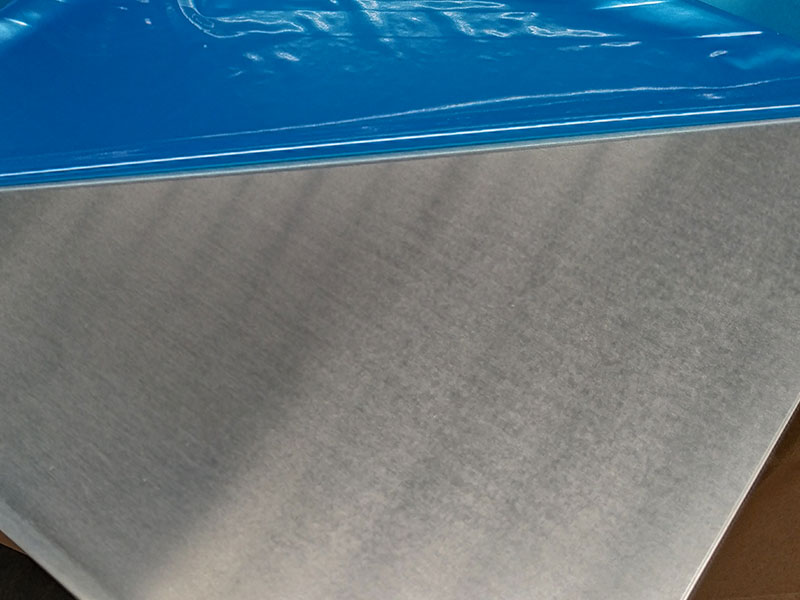Prepainted aluminum sheet with 0.02- 3mm thickness
Prepainted Aluminum Sheet with 0.02–3mm Thickness: The Seamless Fusion of Aesthetics and Performance
In the evolving landscape of materials engineering, prepainted aluminum sheets ranging from 0.02 to 3 mm thickness have emerged as quintessential contributors to modern design and industrial application. While traditionally characterized by their ornamental finishes, the nuanced interplay between their dimensional freedom and coated performance underlines a more strategic utility than mere aesthetics.
Innovative Material Layering: Beyond Just Paint
At a glance, a prepainted aluminum sheet might appear to be just a metal substrate topped with decorative paint. However, its design philosophy is rooted in material science innovation. The base material—aluminum alloy minus any additional surface preparation—is first meticulously cleaned and chemically treated to enhance coating adhesion and longevity. This step ensures the paint interface bonds at a molecular level, providing durability against environmental assaults such as UV radiation, corrosion, and mechanical abrasion.
The coating itself often incorporates multilayer polymeric systems designed through crosslinking chemistries (e.g., polyester, PVDF, polyester-polyamide hybrids). These layers, optimized typically between 15~30 microns thickness, impart vital properties like weather resistance, reflectivity, and scratch resilience. When produced on aluminum substrates as slender as 0.02 mm, this fine balance between metallic strength and polymeric protection enables applications demanding lightweight yet high-performance materials.
Thickness Range as a Catalyst to Multidisciplinary Use
The thickness spectrum from 0.02 mm to 3 mm notably diversifies performance parameters:
-
Ultrathin Sheets (0.02 to 0.2 mm): Their most prominent advantage is extreme formability and lower weight, suitable for applications where design aesthetics merge with rapid assembly processes. Used in electronic housing, phone frames, or decorative overlays, these sheets maintain exceptional surface integrity despite frequent bending, enhancing both look and lifespan.
-
Medium Thickness Sheets (0.2 mm to 1.0 mm): Representing a performance/weight ratio sweet spot, these sheets serve architectural facades, advertising billboards, and automotive body components. Their thicker substrate lends improved stiffness while still allowing complex shaping, bearing heavier surface loads without paint cracking.
-
Thicker Sheets (1.0 mm to 3 mm): Occupying roles in industrial and large-scale infrastructure, these sheets provide enhanced mechanical robustness with coating as a protective element rather than ornamental layer alone. Industrial equipment panels, refrigerated container surfaces, and transportation vehicle claddings typically fall in this category, utilizing increased lamination thickness to counter impact, abrasion, and oxygen-induced degradation in harsh environments.
Distinctive Applications—Where Science Meets Practicality
What differentiates prepainted aluminum sheets in multiple domains is the application synergy with functional coatings:
-
Reflective Roofing and Cladding: Leveraging spectral reflectance along with vibrant coil-coated colors multiplied energy-efficient buildings by lowering heat gain. Thickness elasticity allows effortless installation on varied supports.
-
Transportation and Automotive: Lightweight prepainted sheets reduce vehicular mass, directly benefiting diesel/electric efficiency, while coatings withstand weathering stresses and UV to preserve visual appeal throughout lifespan cycles typically spanning 10–15 years.
-
Consumer Goods: High-end appliances and electronic items utilize ultrathin prepainted aluminum for scratch-resistant yet visually striking exteriors retaining color fidelity.
Technical Insights from Layer-Substrate Interaction
Remarkably, comparing the elemental interaction of coatings in ultra-thin vs. heavier sheets reveals learning in strain accommodation. Thin substrates flex in response to mechanical forces transmitting bending strain to coatings. To counter micro-cracks, proprietary strain-absorbing binders in the paint system accommodate tension-shrink cycles robustly.
Further enhancing environmental resilience, pretreatment methods vary for thickness: Organically bonded phosphate coatings suffice under 1 mm to balance cost and bonding; thicker materials employ stronger chemical layers or even anodization variants for corrosion barriers.
https://www.aluminumplate.net/a/prepainted-aluminum-sheet-with-002-3mm-thickness.html







